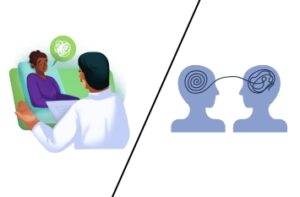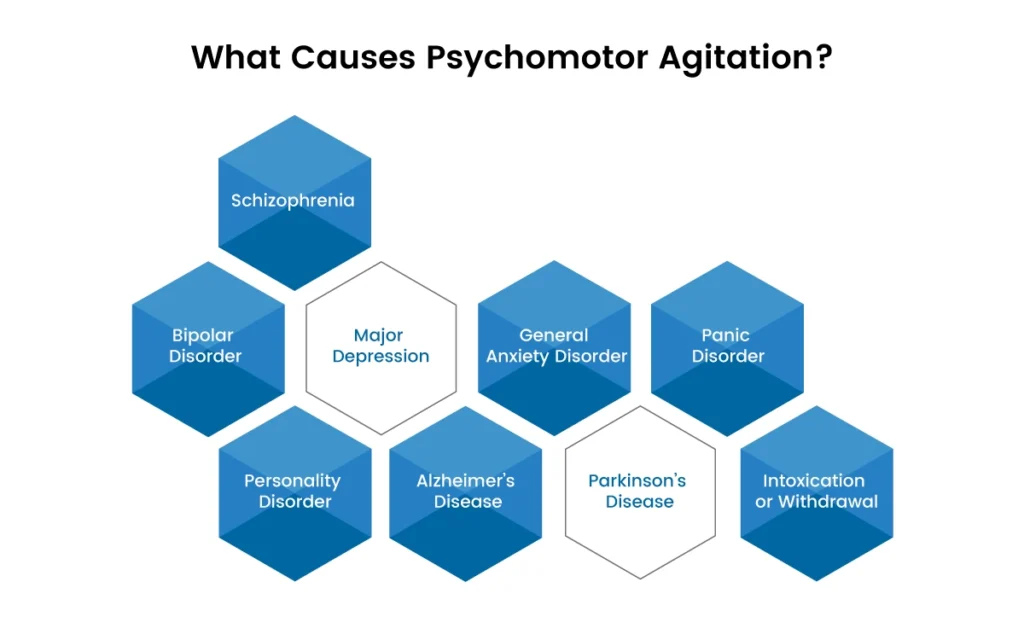
Counseling vs. Therapy: What’s the Difference, and Which One Do You Need?
Counseling vs. Therapy: What’s the Difference, and Which One Do You Need? When You’re Ready to Seek Support When you’re ready to seek support for

Have you ever noticed someone exhibiting peculiar or seemingly erratic movements that don’t quite fit typical patterns of behavior? This intriguing phenomenon is known as “unusual psychomotor behavior.” Far from being just an odd quirk, it’s a term that bridges the gap between behavior and mental health.
Unusual psychomotor behavior encompasses a wide range of involuntary or out-of-the-norm physical actions, from repetitive motions to sudden, uncharacteristic gestures. This behavior can manifest in various mental health conditions, such as schizophrenia, bipolar disorder, and certain neurological disorders.
It’s most commonly observed in individuals with severe psychological disturbances or neurodevelopmental conditions.
Psychomotor agitation is a state characterized by excessive and uncontrollable physical activity that often accompanies heightened emotional distress. This condition manifests through a range of restless behaviors, such as fidgeting, pacing, or an inability to sit still.
Individuals experiencing psychomotor agitation may exhibit signs of extreme anxiety, irritability, or agitation, which can disrupt their daily functioning and overall quality of life. It is commonly associated with several mental health disorders, including bipolar disorder, major depressive disorder, and severe anxiety disorders.
The relentless need to move or engage in repetitive actions serves as a physical expression of inner turmoil and can significantly impact a person’s ability to focus, make decisions, and interact socially.
Examples of Psychomotor Agitation
Constant Pacing: Imagine someone unable to remain seated during a stressful meeting, continuously walking back and forth. This constant pacing is a classic sign of psychomotor agitation, reflecting an internal struggle to manage anxiety or emotional distress. The relentless movement can be a physical manifestation of heightened inner tension and restlessness.
Incessant Hand-Wringing: Another example is a person who persistently wrings their hands or repeatedly taps their fingers on a surface. This repetitive action often accompanies intense feelings of unease or frustration. Such behavior serves as a coping mechanism for the overwhelming emotions they are unable to express verbally.
Hyperactive Speech: A person exhibiting psychomotor agitation might also display hyperactive speech, talking rapidly and jumping from one topic to another without coherent transitions. This verbal restlessness mirrors their internal state of agitation, where their thoughts race uncontrollably, reflecting a struggle to maintain calm and focus.
Psychomotor agitation and psychomotor retardation are contrasting conditions, each reflecting different types of disruptions in movement and behavior.
Psychomotor agitation involves excessive, restless activity and an inability to remain still, often driven by intense emotional distress or anxiety. For example, psychomotor retardation is characterized by slowed physical movements, diminished response times, and general lethargy.
While agitation is marked by an overabundance of activity, retardation denotes a significant reduction in movement and activity. Differentiating between these two is crucial for accurate diagnosis and effective treatment, as they can indicate different underlying mental health issues or disorders.
Psychomotor agitation can stem from a variety of psychological and medical conditions. It often signals underlying emotional or cognitive disturbances that manifest as excessive or restless physical activity. Here are some common causes:

Psychomotor agitation is often accompanied by a range of signs and symptoms that affect various aspects of a person’s behavior, cognition, and daily functioning. Understanding these associated symptoms can provide a clearer picture of the condition and aid in identifying appropriate interventions.
Behavioral symptoms of psychomotor agitation typically include observable actions and movements that reflect inner turmoil. These can manifest as:
Cognitive symptoms often involve disruptions in thought processes and mental functioning, which can exacerbate feelings of agitation:
Functional symptoms affect a person’s ability to carry out daily activities and responsibilities, often due to their agitation:
Bipolar disorder is closely linked to psychomotor agitation, particularly during manic or hypomanic episodes. Individuals with bipolar disorder often experience heightened energy levels, which can manifest as restlessness and excessive physical activity.
This agitation is a reflection of the extreme mood fluctuations characteristic of the disorder, where the individual may be overwhelmed by intense emotions and an inability to stay still.
During manic phases, the agitation can become particularly pronounced, with individuals displaying a noticeable increase in activity levels, rapid speech, and impulsive behaviors.
Effectively managing and treating psychomotor agitation involves a multifaceted approach tailored to the underlying cause and the individual’s specific needs. Treatment often combines pharmacological, psychological, and lifestyle strategies to address both the symptoms and the root of the agitation.
Calming psychomotor agitation involves a blend of immediate coping techniques and long-term strategies to address the underlying causes. For immediate relief, techniques such as deep breathing exercises, progressive muscle relaxation, and mindfulness can help reduce acute stress and promote a sense of calm.
Engaging in physical activities like walking or stretching can also provide a constructive outlet for restless energy. In the long term, addressing the root causes of agitation through therapy, medication, and lifestyle changes is crucial.
Developing a consistent routine, practicing stress management techniques, and seeking support from mental health professionals can help stabilize mood and reduce the frequency and intensity of agitation episodes.
By integrating these approaches, individuals can gain better control over their agitation and improve overall well-being.
It’s important to see a doctor if psychomotor agitation persists, worsens, or significantly impacts daily functioning. If you or someone you know is experiencing persistent restlessness, excessive physical activity, or agitation that interferes with work, social interactions, or overall quality of life, seeking professional help is crucial.
If these symptoms are accompanied by severe emotional distress, mood swings, or other concerning behaviors, a healthcare provider can offer a comprehensive evaluation, determine the underlying cause, and recommend appropriate treatment.
Early intervention can help manage symptoms more effectively and improve overall mental health outcomes.
Psychomotor agitation is a significant behavioral and psychological symptom that can impact various aspects of life, from daily activities to emotional well-being. Recognizing the signs and understanding the underlying causes, whether related to mental health conditions or other factors, is crucial for effective management.
By employing a combination of immediate coping strategies, long-term treatment options, and professional support, individuals can better manage psychomotor agitation and improve their overall quality of life.

Counseling vs. Therapy: What’s the Difference, and Which One Do You Need? When You’re Ready to Seek Support When you’re ready to seek support for
